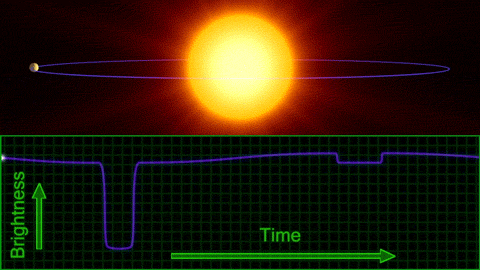Exoplanets in Transmission
As the planet transits across its star a small portion of the starlight will filter through the atmosphere before reaching our telescopes. Imprinted on this light are the fingerprints of different atoms and molecules in the planets atmosphere. We measure the transmission spectra of exoplanets to determine their composition and gain an understanding of their origin and evolution.
Our ability to identify the consituent chemicals in exoplanet atmospheres now allows us to test theories planet formation. Hot Jupiters, large gaseous planets close to their host stars, are not believed to have formed at their current locations, instead arriving there through disk migration or scattering by other planets or nearby stars. The BOWIE-ALIGN program (JWST GO 3838), led by Dr. James Kirk of Imperial College London and Dr. Eva-Maria Ahrer of the Max Planck Institute for Astronomy, seeks to find observational signatures differentiating these migration mechanisms. Dr. Ahrer also leads a complementary program looking at the hot Jupiter WASP-94Ab (JWST GO 3154) seeking to further understand the origins of these planets
While there is significant focus on hot Jupiters in the astronomy community, members of the BOWIE+ collaboration have also been investigating temperate ("Chemistry and Clouds of a Temperate Jupiter"; GO 4227, with PIs Alastair Claringbold and Prof Peter Wheatley, both of the University of Warwick) and warm Jupiters ("Warm Jupiters: the next step in uncovering giant planet formation and migration"; GO 7982, with PIs Alastair Claringbold of Warwick and Prof James Owen of Imperial College) using transit spectroscopy as a way to understand these understudied populations of exoplanets.

